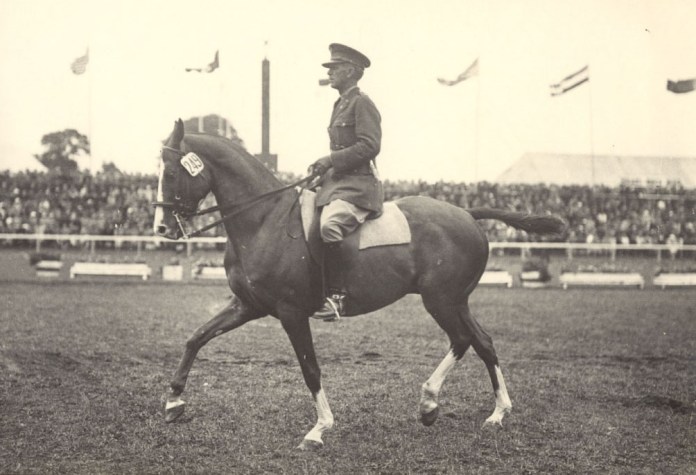Reprinted from the October 2015 USDF Connection magazine.
By Jennifer O. Bryant
The practice of dressage in the United States traces back to exactly one man.
Yes, there were other cavalry officers doing dressage in the early years of the twentieth century— they had to, as part of the Military test we now call the sport of eventing— but among them, only one chose to specialize in dressage.
That pioneering soul not only embraced the then littleknown equestrian discipline; he also managed to become one of the most successful American dressage competitors in history, as well as the coach of another successful competitor who also achieved a US dressage first.
That trailblazer was US Army Col. Hiram Tuttle (1883-1956), who was inducted into the Roemer Foundation/USDF Hall of Fame in 2002.
Tuttle was one of “the Army’s Fab Four” equestrians spotlighted in my book Olympic Equestrian: A Century of International Horse Sport. Read on for a look at this remarkable man and his career, which I’ve adapted from the book.

Hiram Tuttle: Ahead of His Time
The Army’s lone dressage enthusiast didn’t fit the cavalry mold. Older than his Olympic teammates, fated never to rise to the top of the officer corps, Captain Hiram Tuttle developed a passion for dressage when almost no one in the United States had ever heard the word. Despite the lack of qualified dressage instructors, he somehow managed to teach himself the fine points of classical horsemanship and went on to become this country’s foremost dressage rider. He played a major role in the Army team’s winning the team dressage bronze medal in the 1932 Olympics in Los Angeles—America’s first medal in Olympic dressage— and also claimed the individual bronze medal aboard his horse, appropriately named Olympic, in the highest-ever individual placing in American Olympic dressage history.

“Tuttle did so much with so little and was so little appreciated,” said military historian and professor Louis A. DiMarco, Lt. Col, USA (Ret.), author of War Horse: A History of the Military Horse and Rider. “He was the only officer to focus strictly on dressage. Everybody else in the Army world—which in those days meant in America—who did dressage learned what to do and how to do it from him.”
They also learned from Tuttle’s horses, which he owned privately so that he could school them as he pleased and use them strictly for dressage, without the all-around demands that were placed on the cavalry-owned mounts. (Two of Tuttle’s horses, Olympic and Si Murray, competed on the 1936 dressage team.)
In some ways Tuttle was the Rodney Dangerfield character among the cavalry officers: He didn’t get much respect. Part of the reason was that most Army riders had little use for dressage’s discipline, formality, and lack of excitement. Another part, Di- Marco surmises, is that Tuttle was a quartermaster (supply) officer.

“They’re in charge of supplies and filling out forms,” he explained. “They’re just not the swashbuckling types, as most of the other cavalrymen were.” Tuttle’s age also set him apart from his colleagues and Olympic team- mates: Tuttle was at least ten years older, and his equestrian interests, military field, and academic and professional background—he didn’t attend the US Military Academy at West Point, and he had been a practicing attorney when he joined the Army as part of its emergency expansion before World War I—set him somewhat apart from the others. (Tuttle did have one protégé, the late Major Robert Borg, who led the US dressage teams in the 1948 and 1952 Olympics. Borg, whose 1948 Olympic team is the only US team ever to win an Olympic silver medal in dressage, was inducted into the Roemer Foundation/ USDF Hall of Fame in 2006, four years after his mentor.)
Tuttle continued to ride and care for his horses after he retired from the military, and he never sold any of his mounts. He died in 1956 at the age of 73 and was buried in the cemetery at Fort Riley, KS, home of the Army’s Cavalry School until 1947. Fort Riley is also the final resting place of Tuttle’s horses Vast, Si Murray, and Olympic.
















